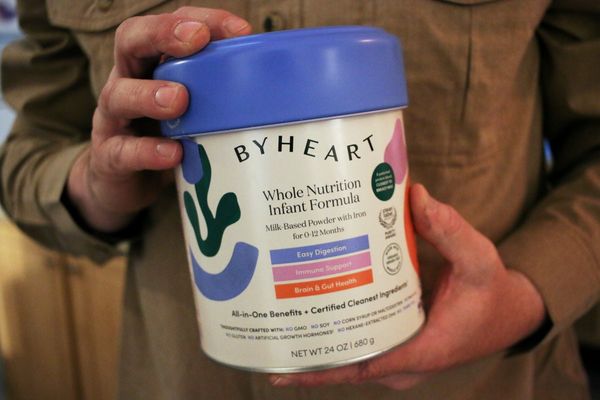
Not many people would be willing to say that their lives had been transformed by a sheep. But the embryologist Ian Wilmut, who has died aged 79, was happy to acknowledge the impact of a Finn-Dorset cross called Dolly on his subsequent reputation and career.
Dolly, born on 5 July 1996, was the first mammal in the world to be cloned from an adult cell. She was one of a succession of cloned lambs born as a result of Wilmut’s research programme at the Roslin Institute, near Edinburgh, into ways of genetically engineering farm animals so that they would produce medically useful products in their milk. This comparatively prosaic ambition was almost entirely eclipsed in the public imagination after Dolly’s birth. Her arrival overturned the biological dogma that once a cell had adopted its specialised identity in an adult, it could not be induced to form a new individual.
Elements of the press immediately linked the research to Boys from Brazil-style human cloning and “armies of dictators”. Though not naturally one to seek the limelight, Wilmut fell into the role of spokesman for Dolly, who herself was tame, sociable and photogenic. He therefore became most closely associated in the public mind with her “virgin birth”, and was knighted in 2008. Wilmut himself, however, always acknowledged that his colleague, the cell biologist Keith Campbell, discovered the key technological development that made possible the birth of Dolly.
The technique they used involved transferring the DNA from a donor cell to an egg cell from which the DNA had been removed. Campbell’s insight was that it was not the age of the donor that was critical to success – they achieved live births with embryonic and foetal cells as well as the one adult cell that resulted in Dolly. Instead, the trick was to arrest the donor cell’s cycle of growth and division by depriving it of nutrients, so that it remained in a “quiescent” state. Placed in the environment of an egg, its DNA would then set in motion the process of embryonic development.
Dolly was the sole live lamb from an experiment in which 277 cells were taken from the mammary gland of an elderly ewe and cultured as cloned embryos. (Her name, chosen by the team’s large animal anaesthetist John Bracken, was inspired by the country singer Dolly Parton.) Despite this very low success rate, Wilmut’s phone began to ring off the hook after the announcement of Dolly’s birth in a short report in the journal Nature in February 1997. Not only was the world’s press agog for more, but also bereaved parents were begging him to bring their children back.

Human cloning, however, was never part of Wilmut and Campbell’s plans, and indeed, as they wrote in the book they co-authored with the writer Colin Tudge, The Second Creation (2000): “We would rather that no one ever attempted it.” In his subsequent book with Roger Highfield, After Dolly: The Uses and Misuses of Human Cloning (2006) he acknowledged the inherent ethical dilemmas, writing that “Although I am for the use of genetic modification to treat disease and against enhancement, I would be the first to admit that there will be endless arguments over where to draw the line.”
Wilmut was born during the second world war, in Hampton Lucy, a Warwickshire village near his parents’ much-bombed home city of Coventry. Eileen (nee Dalgleish) and Jack Wilmut were both teachers, and when Ian was in his teens they relocated to Scarborough in North Yorkshire, where his father taught mathematics at the local boys’ high school. At the same school, Ian came under the influence of an inspiring teacher of biology. Having earned pocket money as a farm labourer in his teens, he chose to study agriculture at the University of Nottingham.
In his final year he took a summer job at the Agriculture and Food Research Council Unit of Reproductive Physiology and Biochemistry at Cambridge with Chris Polge, who had pioneered successful methods of freezing and thawing cells. Wilmut then undertook a doctorate on frozen boar sperm, supervised by Polge and supported by a scholarship from the Pig Industry Development Authority. He went on to become the first in the world to achieve the live birth of a calf (Frostie) from a frozen, thawed and implanted embryo.
In 1973 he moved to a permanent post at the government-funded Animal Breeding Research Organisation (later the Roslin Institute), where he joined the programme that eventually led to Dolly’s birth. The cloning work did not lead immediately to commercial applications, and in 1999 the US biotechnology company Geron bought the rights to the technology.
In 2005 Wilmut switched to medical research, accepting a chair in reproductive science at the University of Edinburgh, where he headed its Centre for Regenerative Medicine until 2011. He helped to establish a collaborative project to study the genetic basis of motor neurone disease using the induced pluripotent stem cell technique developed by the Japanese researcher Shinya Yamanaka in 2008.
The same technique led Wilmut and his colleagues to form a joint research initiative with the University of Dundee on another neurodegenerative condition, Parkinson’s disease. Announcing the initiative on World Parkinson’s Day in April 2018, Wilmut revealed that he himself had then recently been diagnosed with the disease.
He regretted that the condition would slow him down in his favoured recreation of hill walking – he had also once enjoyed the quintessentially Scottish sport of curling, though he declared himself too nervous to compete.
Wilmut and his childhood sweetheart Vivienne Craven were married in 1967, and they went on to have two daughters and a son. Vivienne died in 2015. In 2017 Wilmut married Sara Haddon. He is survived by Sara, by his children, Helen, Naomi and Dean, and by five grandchildren, Daniel, Matthew, Isaac, Tonja and Tobias.
• Ian Wilmut, embryologist, born 7 July 1944; died 10 September 2023







